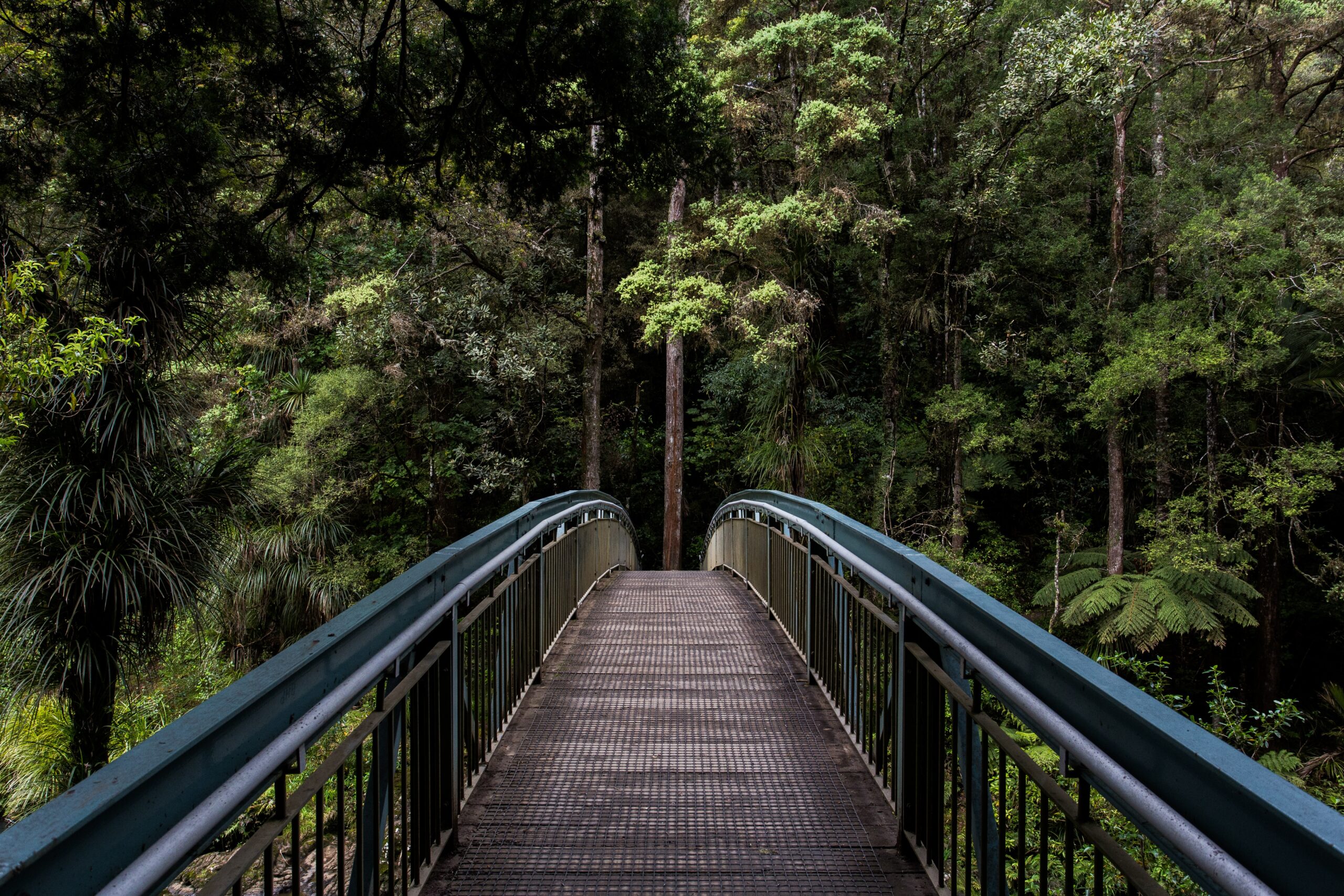Imagine finding yourself in the heart of a dense forest, surrounded by towering trees and unfamiliar fauna. Your heart races as you realize you must rely on your own knowledge and skills to navigate this challenging environment and ensure your survival. But fear not, for this article will equip you with the essential skills needed to thrive amidst the untamed wilderness of a dense forest. From learning how to construct a shelter to identifying edible plants, join us as we embark on a journey into the depths of the forest, discovering the key skills that will keep you safe, secure, and thriving in this enchanting yet demanding habitat.
Understanding the Environment
Know the Type of Forest
When navigating and surviving in a dense forest, it’s crucial to have a good understanding of the type of forest you are in. Different forests have varying landscapes, vegetation, and wildlife, which can significantly impact your survival strategies. Take the time to research and familiarize yourself with the specific characteristics of the forest you’ll be venturing into.
Recognize Local Flora and Fauna
Being able to identify the local flora and fauna is essential for various reasons. Knowing which plants are edible or have medicinal properties can help sustain you, while recognizing poisonous plants can prevent potentially life-threatening situations. Understanding the behavior patterns of local animals is also crucial for avoiding dangerous encounters.
Learn about Potential Hazards
Forests can pose a wide range of hazards, from falling trees and branches to venomous snakes and spiders. Other potential hazards include poisonous insects, thorny vegetation, and treacherous terrain. By educating yourself about the potential risks associated with the forest environment, you can take appropriate precautions and make informed decisions to keep yourself safe.
Identify Sources of Clean Water
Water is a vital resource for survival, and in a dense forest, it may not always be readily available. Knowing how to identify sources of clean water, such as streams, rivers, or natural springs, is essential. Additionally, understanding purification methods will enable you to make water safe for drinking, reducing the risk of dehydration or waterborne illnesses.
Navigation Skills
Using the Sun and Stars
When you find yourself deep in a dense forest, without any modern navigational aids, the sun and stars can become your guiding tools. Learning how to utilize the position of the sun during different times of the day and the movement of stars at night can help you determine direction and maintain a sense of orientation.
Learn Basic Map and Compass Skills
Having a basic understanding of maps and compasses is crucial for effective navigation in a dense forest. Maps can provide valuable information about the terrain, water sources, and potential hazards in the area, while a compass allows you to maintain a consistent sense of direction.
Identifying Landmarks
Identifying prominent landmarks within the forest can help you navigate and orient yourself. These landmarks could be large trees, distinctive rock formations, or unique geographical features. By paying attention to these landmarks, you can create mental markers and develop a mental map of the forest, making it easier to navigate and find your way back if needed.
Understanding How to Use GPS and Other Modern Technology
While relying solely on modern technology is not advisable in survival situations, having knowledge of how to use GPS devices and other technology can be useful. These tools can provide accurate location information and help you navigate through dense forest areas more efficiently. However, it’s essential to have alternative navigation skills in case these devices fail or run out of battery.

Building a Shelter
Selecting an Appropriate Site
Finding the right location for your shelter is crucial for your safety and well-being. Look for a spot that offers protection from the elements, such as wind and rain. Avoid areas prone to flooding or falling debris, and consider the proximity to water sources and potential food-gathering areas.
Common Materials and Ways to Construct a Shelter
There are various materials available in a dense forest that you can use to construct a shelter. These include branches, leaves, moss, and natural rock formations. Learning different shelter-building techniques, such as lean-tos, debris huts, or natural caves, will provide you with options depending on the available resources and the specific conditions you are facing.
Insulating Your Shelter Properly
Once you have built your shelter, it’s crucial to insulate it properly to protect yourself from extreme temperatures. Insulation can be achieved by using a layer of leaves, grass, or pine needles on the floor of the shelter. This layer acts as a barrier between your body and the cold ground, helping to preserve body heat.
Using Natural Structures
In some instances, you may come across natural structures within the forest that can be utilized as shelters. These may include caves, large fallen trees, or rock overhangs. Assess their suitability based on safety and protection from the elements, and make any necessary modifications or improvements to enhance their functionality as shelters.
Making Fire
Understand the Basics of Fire Making
Being able to create fire is a fundamental skill for survival in any environment, including dense forests. Learn the different methods of fire making, such as using friction (bow drill or hand drill), focusing sunlight with a magnifying glass or reflective material, or using fire starters like flint and steel. Practice these techniques in a controlled environment before relying on them in a survival situation.
Identify Suitable Firewood and Tinder
Gathering proper firewood and tinder is essential for starting and maintaining a fire. Look for dry, dead wood that can be easily broken or snapped into smaller pieces. Tinder, such as dry leaves, grass, or bark, helps ignite the fire and sustain it until larger fuel can be added.
Safety Precautions with Fire
Fire can be a double-edged sword when it comes to survival. While it provides warmth, light, and the ability to cook food, it can also be dangerous if not handled responsibly. Always ensure your fire is in a safe location, away from flammable materials, and never leave it unattended. Be aware of the local fire regulations and take precautions to prevent wildfires.
Keeping Fire Sustainable
In a dense forest environment, it’s essential to ensure that your fire remains sustainable by managing fuel consumption effectively. Collect firewood sparingly and avoid stripping an area of all its resources. Only burn what is necessary, and when you extinguish the fire, ensure it is completely out and cold before leaving the area.

Signalling for Help
Using Mirrors or Reflective Objects
When in need of rescue, using mirrors or reflective objects can help increase your visibility from a distance. Reflect sunlight towards potential search and rescue teams or passing aircraft by angling the mirror or reflective object towards them. Regularly scan the surroundings for any signs of rescue efforts.
Ground-to-air Signal Codes
Learning ground-to-air signal codes can greatly increase your chances of being noticed and alert search and rescue teams to your presence. Symbols such as SOS (three short signals, three long signals, three short signals), X (for immediate assistance), or a helipad symbol (to indicate a suitable landing zone) can be created using rocks, branches, or any other available materials.
Creating Smoky Fire
When visibility is limited, creating a smoky fire can act as a distress signal. Add green vegetation or damp materials to your fire to produce thick smoke. The contrast between the smoke and the surrounding environment can attract attention and increase the likelihood of being spotted by potential rescuers.
Using Flares if Available
If you have access to flares, they can be highly effective for signaling for help in a dense forest. Flares produce bright and colorful lights that are visible from a distance. Follow the instructions provided with the flares and aim them towards areas where they are likely to be seen by search and rescue teams or passing aircraft.
Food Gathering
Recognize Edible Plants
Knowing which plants are edible in a dense forest can be a lifesaver. Learn to identify common edible plants, such as berries, nuts, and tubers, as well as edible parts of otherwise toxic plants. It’s essential to be cautious and accurately identify these plants to avoid consuming something that could be harmful.
Basic Trapping Techniques
Using traps can be an effective way to secure a source of food in a survival situation. Familiarize yourself with basic trapping techniques, such as the snare trap, which can be made using natural materials found in the forest. Remember to check your traps regularly to increase the chances of a successful catch and minimize unnecessary suffering for the trapped animals.
Fishing Skills
If you are near a water source, fishing can provide a valuable source of food. Learn different fishing techniques, such as using improvised hooks, lines, and nets. Understanding fish behavior, identifying suitable fishing spots, and knowing how to clean and cook the fish will greatly enhance your chances of success.
Food Preservation Methods
In a dense forest, food sources may not always be readily available, so it’s crucial to preserve any excess food you manage to gather. Techniques such as smoking, drying, or curing can help extend the shelf life of perishable food items. Additionally, consider preserving extra food in natural coolers, such as near water sources or in underground caches.

Hydration and Water Procurement
Sources of Potable Water in Forests
Locating sources of potable water is essential for your survival. In a dense forest, there are various potential sources, including streams, rivers, lakes, and natural springs. Be cautious of stagnant water sources or those contaminated by animal waste. Prioritize moving water, as it tends to be cleaner and less likely to harbor harmful bacteria.
Methods for Purifying Water
Even if you find a water source, it’s essential to purify it before consuming it to avoid waterborne illnesses. Learn different water purification methods, such as boiling, using water filtration systems, or chemical treatment options like iodine tablets or chlorine dioxide drops. Having multiple purification methods at your disposal increases your chances of making water safe to drink.
Dehydration Signs and Symptoms
Recognizing the signs and symptoms of dehydration is essential to your well-being. In a dense forest environment, where physical exertion and environmental conditions can increase the risk of dehydration, it’s crucial to stay hydrated. Symptoms of dehydration include increased thirst, dry mouth, fatigue, dizziness, and decreased urine output. Stay vigilant and prioritize regular water consumption.
Collecting Rainwater
Rainwater can be an excellent source of clean water when in a dense forest. Learn how to collect rainwater effectively by using improvised containers, such as large leaves or bark, or by utilizing natural concavities in rocks or tree trunks. Be sure to filter and purify the collected rainwater before drinking it to avoid any potential contaminants.
First Aid and Health Preservation
Attend to Basic Wound Care
In a survival situation, it’s vital to be able to attend to basic wound care to prevent infections and further complications. Learn how to clean wounds, dress them with appropriate bandages or makeshift alternatives, and keep them protected from dirt and moisture. Basic knowledge of wound cleaning, control of bleeding, and recognizing signs of infection can make a significant difference in your overall health.
Understand Symptoms of Common Ailments
Being able to identify the symptoms of common ailments can help you address them promptly in a dense forest environment. Understand the signs of illnesses such as food poisoning, heat exhaustion, hypothermia, or allergic reactions. Knowing how to manage these conditions can prevent them from becoming life-threatening or debilitating.
Natural Remedies and Their Usages
In a survival situation, natural remedies can provide relief for common ailments or minor injuries. Familiarize yourself with local plants that have medicinal properties, such as soothing aloe vera for burns or antiseptic properties of certain tree barks. However, exercise caution when using natural remedies, as some plants may have adverse effects or be toxic if used incorrectly.
Preventing Hypothermia and Heatstroke
Extreme temperatures, whether hot or cold, can pose significant threats to your health in a dense forest. Take precautions to prevent hypothermia during cold weather by layering clothing, insulating your shelter, and staying dry. In hot weather, avoid overexertion, seek shade, and stay hydrated to prevent heatstroke. Being aware of the signs and symptoms of these conditions can help you take preventive measures or seek appropriate treatment.
Surviving Animal Encounters
Recognize Dangerous Species
In a dense forest, it’s essential to be able to recognize any dangerous animal species that may pose a threat to your safety. Familiarize yourself with the common venomous snakes, aggressive predators, or animals known for transmitting diseases in the area. Avoid areas where these animals are commonly found, and take precautions to minimize encounters.
Understand Animal Behavior
Understanding the behavior patterns of animals in the forest can help you avoid unnecessary confrontations. Learn about their feeding habits, nesting areas, and territorial behaviors to help you navigate their territories safely. Additionally, be aware of the signs or warning signals animals may give before launching an attack, allowing you to respond appropriately and protect yourself.
Self-defense Techniques against Animals
Although avoiding confrontations with animals is ideal, knowing basic self-defense techniques can provide an added layer of protection. Familiarize yourself with self-defense techniques appropriate for different animal encounters. For example, understanding how to use a stick to defend against an aggressive dog or knowing how to react during a bear encounter can make a crucial difference in your safety.
Avoid Attracting Unwanted Animals
Preventing unwanted animal encounters starts with minimizing anything that may attract them. Properly store and secure your food away from your sleeping area to avoid attracting animals with a keen sense of smell. Additionally, be mindful of not leaving food wrappers or scraps around, as they can also attract curious animals. By practicing good camp hygiene, you can reduce the chances of unwelcome animal visitors.
Maintaining Morale and Mental Strength
Cope with Loneliness and Fear
Surviving in a dense forest can be mentally challenging, with feelings of loneliness and fear creeping in. It’s important to find ways to cope and maintain a positive mindset. Connect with nature by observing the beauty of your surroundings, keep yourself mentally occupied with tasks or hobbies, and find comfort in the fact that rescue teams may be searching for you.
Learn Simple Meditation and Relaxation Techniques
Meditation and relaxation techniques can help calm your mind and reduce stress and anxiety in a survival situation. Practice deep breathing exercises, progressive muscle relaxation, or visualization to create a sense of calm and focus. These techniques can be invaluable when facing challenges or feelings of overwhelm.
Keeping a Positive Outlook
Maintaining a positive outlook is essential for your mental well-being and survival in a dense forest. Focus on the small victories and accomplishments, no matter how minor they may seem. Celebrate the beauty and wonders of nature around you, and remind yourself that with each passing day, you are one step closer to safety and rescue.
Understanding the Importance of Routine and Discipline
Establishing a routine can provide a sense of structure and purpose in a survival situation. Set small daily goals, such as gathering food or improving your shelter, and stick to a schedule. This discipline will help you maintain focus and motivation, even when faced with challenges. A well-structured routine can also contribute to improved mental strength and overall morale.
Surviving in a dense forest requires a combination of skills, knowledge, and a resilient mindset. By understanding the environment, honing navigation skills, building a shelter, mastering fire making, knowing how to signal for help, gathering food and water, attending to first aid needs, preventing animal encounters, and maintaining mental strength, you significantly enhance your chances of thriving in this challenging environment. Keep in mind that mastering these skills takes practice and preparation, so start familiarizing yourself with them before venturing into the forest. Stay positive, stay focused, and trust your abilities as you embark on your wilderness survival journey.

